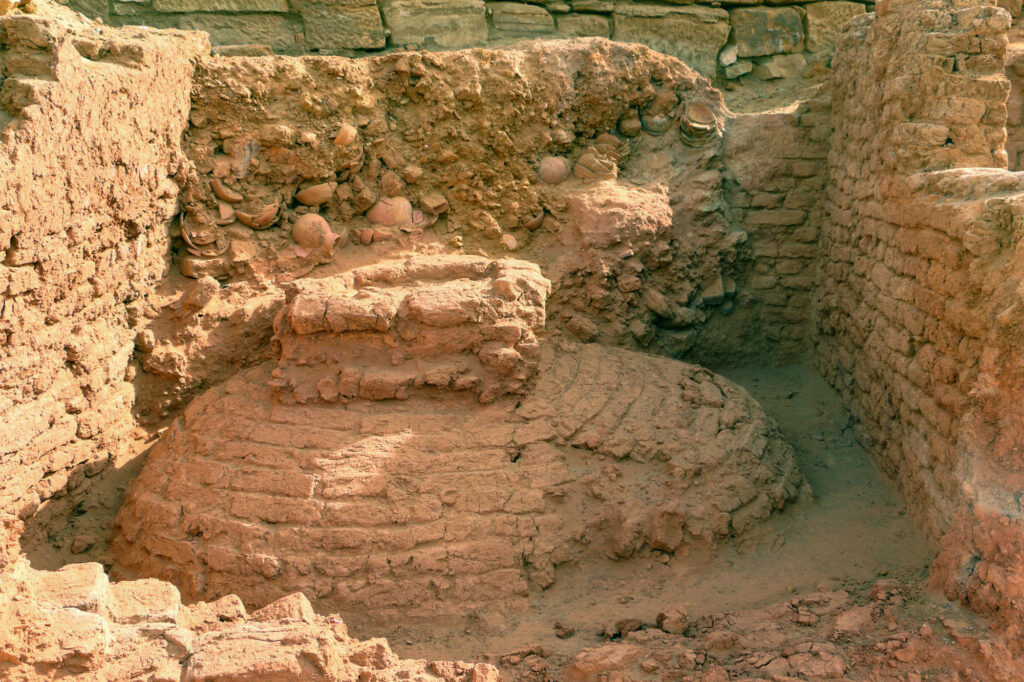Archaeologists Discover Well Preserved Storage Silos In Ancient Egyptian Town
Austrian archaeologists have discovered a 4,000-year-old administrative centre with over 30 storage facilities that ancient Egyptians used to stock grain.
The team of researchers from the Cairo branch of the Austrian Archaeological Institute (OAI) of the Austrian Academy of Sciences (OAW) found the 32 extremely well-preserved granaries in the ancient town Kom Ombo in Egypt.
The town’s location on the River Nile, about 50 kilometres (31 miles) north of the city of Aswan, gave it control over trade routes from Nubia to the Nile Valley in ancient times, but its main rise to prominence came with the erection of the Temple of Kom Ombo in the Ptolemaic-Roman period in 2nd century BC.

According to the experts, the storage facilities, made of mud bricks and used as grain depots, originated from the First Intermediate Period also known as a ‘dark period’ in ancient Egyptian history (2180 to 2050 BC).
The remains of the city where the temple was later built have not been well researched as little monumental evidence survived due to the violation of temples, destruction of artworks and demolition of statues.
This, according to various online sources, occurred as a result of the political chaos caused by the two competing power bases, the city of Heracleopolis in Lower Egypt and the city of Thebes in Upper Egypt.

In addition to the granaries, Austrian archaeologists, who have been investigating the ancient city with the Egyptian Ministry of Tourism and Antiquities since 2017, discovered stacks of unwashed plates and bowls in one of the storage rooms.
Senior Research Associate Irene Forstner-Muller, from the Austrian Archaeological Institute of the Austrian Academy of Sciences, said: “There are stacks of unwashed dishes in a silo. There are still bones and other leftovers stuck to them. So something must have happened at the end of the First Intermediate Period that caused this system to be left behind.”
Puzzled over the mystery, she added: “It’s very strange, why would you stack hundreds of dirty plates and bowls there and then leave them behind in such a hurry?”

The archaeologist also reported that the silo-like storage rooms were accessible from above and enclosed by an outer wall and covered.
Forstner-Muller stated: “The structure of the building is very well preserved, the walls are almost two metres high.
“We also discovered robbery pits through the walls in two rooms, through which grain was obviously stolen and then quickly sealed again with clay.”

In addition to the current discovery, remains of a fortress built during the British occupation in the 19th century were found near the Ptolemaic-Roman temple last year.
According to the Austrian Academy of Sciences, the fort probably served as an observation and defence base during the Mahdist War between the Mahdist Sudanese and the forces of the Khedivate of Egypt supported by Britain from 1881 to 1899.



